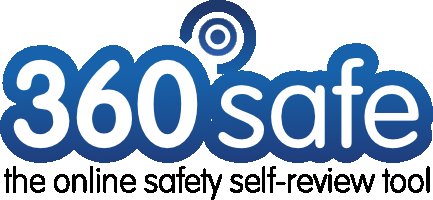As classes start for the new school year, reviewing your Online Safety Policy should be top of the list for schools and colleges across the country. Technology continues to change at a pace, as well as related risks and harms so it is essential that schools are keeping up..
The Keeping Children Safe in Education statutory guidance from the Department for Education recommends that schools and colleges in England should:
consider carrying out an annual review of their approach to online safety, supported by an annual risk assessment that considers and reflects the risks their children face. A free online safety self-review too for schools can be found via the 360 Safe self-review tool.

Online Safety Policies need to be tailored to the needs of each school and college and applies to the whole community who have access to, and are users of school digital systems, both in and out of school. This includes staff, learners, volunteers, parents and carers, visitors and community users. The writing or review of the online safety policies requires consultation and discussion.
While it is best practice to ensure an annual review of the policy, schools should also be prepared to have such reviews more frequently in response to any new technology developments, behavioural trends and online safety incidents or concerns that may arise during the school year.
As part of the wider duty of care to which all who work in schools are bound, all schools have to ensure that their learners are able to use digital technologies appropriately and safely. The Online Safety Policy also forms part of the school’s protection from legal challenge, relating to the use of digital technologies.
Online Safety Training is Essential
Head teachers and senior members of school staff are responsible for ensuring the school’s online safety leads, technical staff and other relevant staff carry out their safeguarding responsibilities, ensuring that necessary training is provided.
Effective staff training has proved to raise awareness of online safety throughout the school community as a whole, which results in staff, children and parents being more confident in identifying and dealing with online safety challenges.
The 2022 Schools in England Online Safety Policy and Practice annual report was released in June. The report, compiled by Professor Andy Phippen from Bournemouth University, looked at online safety in schools in England over the past year with data gathered from the 360 Degree Safe tool which covers over 13,000 schools. The report showed the following areas of concern.

38% of schools had no staff online safety training

48% of schools had no governor online safety training

Weak staff training affected other areas of online safety
Supporting Schools in Improving Practice
The 360 Degree Safe tool, along with SWGfL’s ProjectEVOLVE and Test Filtering Data, has provided support to thousands of schools across the country, becoming a household name in online safety for schools. Each year the collected data is analysed to identify strengths and weaknesses when it comes to online safety in schools. Some of these strengths include:

Most schools have online safety policies in place

Using 360 and ProjectEVOLVE helps schools to perform better

Schools have strong technical interventions in place
360 Degree Safe - Free Online Safety Review
360 Degree Safe allows schools to evaluate their own online safety processes and identify  gaps and possible improvements, as well as providing advice and support. It integrates online safety into school policy and the curriculum to raise awareness, and is designed to help all staff, children and parents in ensuring online safety and not just reserved to those charged with the job of online safety in a educational establishment.
gaps and possible improvements, as well as providing advice and support. It integrates online safety into school policy and the curriculum to raise awareness, and is designed to help all staff, children and parents in ensuring online safety and not just reserved to those charged with the job of online safety in a educational establishment.
The tool also provides a prioritised action plan suggesting what needs to be done and in what order, which is time-efficient for professional’s busy work schedule. Crucially, schools can perform the review at their own pace and can achieve the nationally recognised ‘Online Safety Mark’ which is awarded when the school meets benchmark levels.
Begin taking the steps to making online safety a priority this school year. For more information, visit 360 Degree Safe. If you are a Multi-Academy Trust, you can also find out more about a specific 360 tool that can support you in managing online safety reviews across the whole MAT. As the new school term gets underway, further guidance, advice and support for this time can also be found below.
